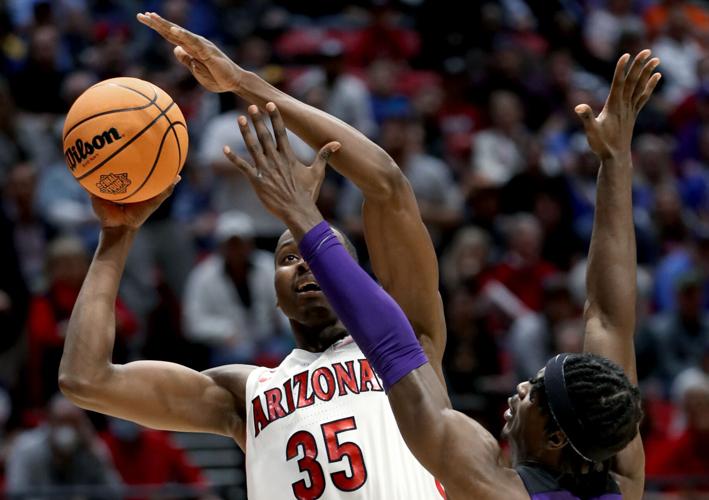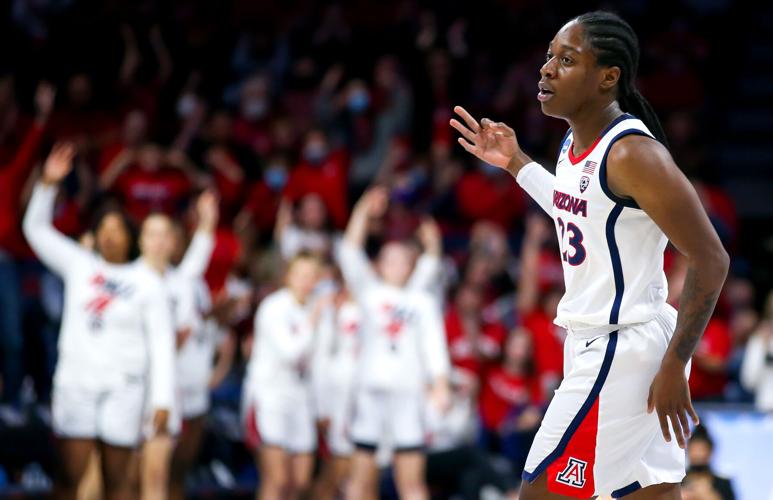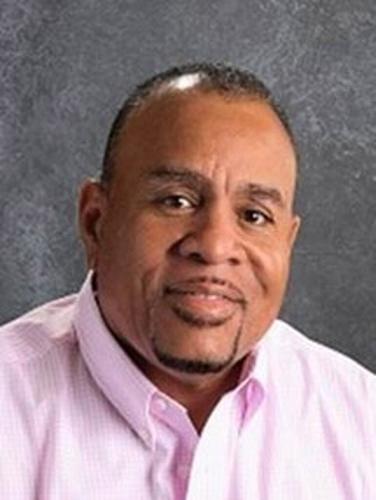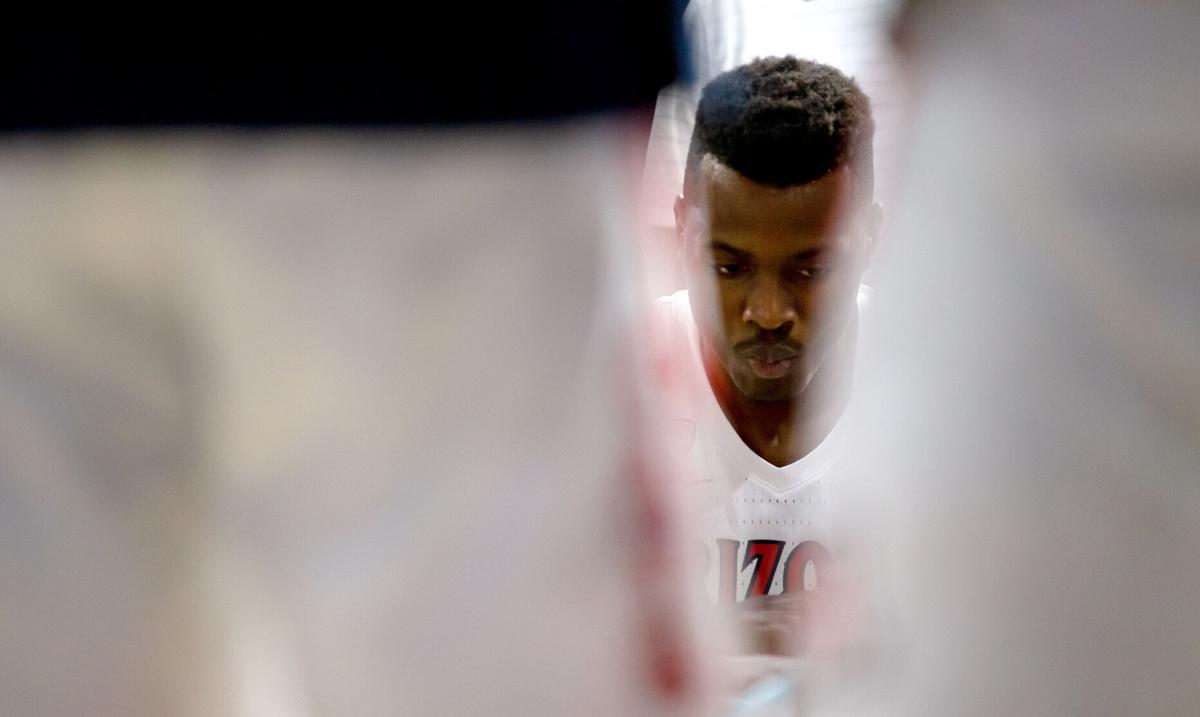The Star's longtime columnist weighs in on Christian Koloko's draft decision, Adia Barnes' roster turnover, Dan Hicks' hall of fame induction and what name image and likeness deals mean for cheating:

Arizona center Christian Koloko eyes the bucket over TCU forward Emanuel Miller during their second-round NCAA Tournament game last month.
Arizona's Christian Koloko must choose between NBA Draft, further development
Sometime in the next few days, Christian Koloko will announce that he has submitted his name to the NBA draft pool. The deadline for him to do so is Sunday, April 24. The key element will be if Koloko says he will retain the option to withdraw from the NBA process, the deadline of which is June 1.
"I’m sure he’ll get drafted," Arizona coach Tommy Lloyd said Thursday. "It’s just, ‘choose wisely.’ It’s your responsibility to make it the right decision."
Added Lloyd: "When you’re ready to make the move, it’s pretty obvious."
It’s not yet obvious to NBA scouts, nor those who have followed Koloko closely. He’s more of a work in progress than those ranked highly in the mock drafts.
That’s what Koloko must determine: Am I ready now? In the next five or six weeks, he must convince NBA scouts that he will improve four areas of his game that, as of now, keep him out of lottery-pick projections. Those areas?
- His face-up game in the paint
- His shooting range
- His ability to resist pressure and score in traffic
- His bulk, strength and physicality
Koloko’s pluses are that he has a good motor, good hands, he can finish at the rim and that he’s shown steady improvement in three college seasons. Plus, he’s a winning personality.
The new type of NBA center is a 7-footer with advanced ball-handling skills and reliable shooting range to 22 feet. In that sense, Koloko is old-school at a new-school position.
That hasn’t stopped the NBA from trying to fill its rosters with old-school 7-foot centers, who are still in strong demand, sort of like big league baseball’s use of middle relief pitchers.
In the last five NBA drafts, 28 "old-school" centers have been drafted. Only four of those 28 are full-time starters (and mostly for bad teams): Orlando’s Mo Bamba of Texas; the Knicks’ Mitchell Robinson of Western Kentucky; the Wizards’ Daniel Gafford of Arkansas; and Cleveland’s Jarrett Allen of Texas.
Koloko may be wise to study the results of the 2021 draft. Ten old-school centers were drafted, including five second-rounders. Of the group, only Turkish center Alperen Sengun averages 20 minutes per game, in Houston. Sengun was the 16th overall choice.
The 2021 draftee that most reminds me of Koloko is 7-1 Neemias Queta, a once-raw prospect from Portugal who enrolled without fanfare at Utah State but helped lead the Aggies to back-to-back Mountain West Conference championships. Queta has the measurables but is still working on his basketball IQ.
Queta blocked 219 shots at USU; Koloko blocked 166 at Arizona. Neither has shooting range away from the basket.
After being selected 39th overall by Sacramento, Queta signed a two-way contract. He was paid $462,000 this year and is due $1.5 million next year. He played just 14 NBA games with Sacramento, averaging eight minutes, and spent 24 games with the G League Stockton Kings, averaging 14 points. That means he basically was inactive in more than 40 games. It’s not the best way to develop NBA skills.
Queta got his foot in the door. The question for Koloko is whether he’ll settle for getting his foot in the draft door this year, or return for a fourth season at Arizona and have a better chance to knock the door down a year from now.

Bendu Yeaney celebrates a 3-point shot during the UA’s NCAA Tournament loss to North Carolina. Yeaney, a Portland native, transferred to Oregon State after the Wildcats were eliminated from last year’s tournament.
Arizona's transfer losses reach 7 with Bendu Yeaney's departure
The NCAA permits women’s basketball teams 15 scholarships, which might be part of the high number of transfers exiting so many Pac-12 programs. Arizona, for example, has lost seven transfers so far. Colorado has lost six, Oregon State four and Oregon three.
By comparison, the NCAA allows just 13 scholarships for men’s basketball, and 10 for Division II teams. NAIA teams have a scholarship maximum of 11.
Arizona coach Adia Barnes believes that 15 scholarships might be too many. "If you have 15, you're going to lose five," she said last week. "There’s just not enough time (to utilize 15 players). My magic number would probably be 13. I don’t know if we’ll ever have 15 again. There’s literally not enough minutes to go around."
Barnes admitted it was "stressful," especially in nonconference games, to spread minutes to 15 players and maintain harmony in the program. Of the seven who left Arizona’s roster in the last few weeks, none averaged more than 6.3 points per game. Only one, Bendu Yeaney, started more than two games.
"The kids don’t often have an honest evaluation of themselves," said Barnes. "If they play 10 minutes, they think they should play 20. These kids don’t have the patience (to ride it out)."
NFL referee Rich Hall retires
Tucson’s Rich Hall last week retired after 18 seasons as one of the NFL’s leading officials, an umpire who worked 12 NFL playoff games and three conference title games. Hall arrived in Tucson in 1972, a highly-regarded defensive line prospect from Antioch, California. He played on Jim Young’s 8-3, 9-2 and 9-2 teams of 1973-75, gaining playing time opposite All-American Mike Dawson and All-WAC lineman Jon Abbott. After earning his UA degree, Hall began to officiate Tucson high school football games in 1976. He followed by working junior-college games in 1982 and was hired by the Mountain West and Big Sky conferences in 1985. When Hall wasn’t working his day job as a Tucson cabinetmaker, he became the leading NFL official ever living in Tucson.

Tucson’s Michael Bates, far right, poses for a photo with Olympian Carl Lewis, left, and his daughter, BreeAna Bates, at ongoing Mt. SAC Relays in California.
Michael Bates accompanies daughter to Mt. SAC
Michael Bates made his debut as an elite college sprinter at the 1989 Mt. SAC Relays in California, running the 100 meters in 10.27 seconds. Then a freshman from Arizona, Bates was the nation’s leading sprinting recruit out of Amphitheater High School, going on two sweep Pac-10 championships in 100 and 200 meters, and win a gold medal at 200 meters in the 1992 Barcelona Olympics. Now retired from his 10-year NFL career and living in Tucson, Bates returned to the Mt. SAC Relays last week. His daughter, BreeAna Bates, a freshman at Michigan, had a big weekend at Mt. SAC, running 100 meters in 11.78 and 200 meters in 24.06. She finished No. 2 last year in the Michigan prep state championships at 100 meters. Bates spent time at Mt. SAC with his 1992 USA Olympic team sprinting competitor Carl Lewis, a nine-time Olympic gold medalist, who was honored by the Mt. SAC Relays organization.
Proud dad Brett Favre in Tucson for volleyball matches
A familiar face was at Arizona’s beach volleyball victory over Southern Mississippi on Friday on the UA campus. Super Bowl quarterback Brett Favre accompanied his daughter, Breleigh Favre’s beach volleyball team to the Arizona Invitational. Breleigh is part of Southern Miss’ No. 1 doubles team; it lost to Arizona’s No. 1 team of Alex Parkhurst, a Salpointe Catholic grad, and Alana Rennie. Favre stuck around for subsequent matches against Long Beach State, Stephen F. Austin and Cal State Bakersfield.
Tucson runner at front of Boston Marathon pack
Tucson’s Nico Montañez was awarded a starting spot with the top 40 pros for Monday’s Boston Marathon. Montañez, who graduated from St. Augustine High School and became an All-American distance runner at BYU, is the lone Tucsonan in the elite field. Arizona’s seven-time NCAA champion distance runner Lawi Lalang will run in the Boston Marathon 5K field Monday. Montañez finished the 2021 season as USA’s No. 5 overall marathon runner. His career best is 2 hours, 13 minutes and 55 seconds. To be in the top 10 Monday in Boston, Montañez will probably need to run four or five minutes faster.
Meg Ritchie-Stone in elite company
The governing bodies of NCAA cross country and track and field — the USTFCCCA — will induct the inaugural class to the organization’s Hall of Fame on June 6 during the NCAA championships in Oregon. The 40-member Class of 2022 is full of the top names in college track and cross country history: Steve Prefontaine, Jim Ryun, Jesse Owens, Jackie Joyner-Kersey and Wilma Rudolph, among others. It also includes Arizona’s Meg Ritchie-Stone, a seven-time NCAA champion who owned women’s world records in the discus and shot put in the early 1980s. Ritchie-Stone was Arizona’s strength and conditioning director from 1985-94 — the first woman in college sports history to oversee mens and women’s S&C — and today works at East Tennessee State in a similar position.
Dan Hicks make J-School's hall
NBC’s lead PGA Tour and Olympics swimming announcer Dan Hicks returned to Tucson last week to be inducted into the UA Journalism School Hall of Fame. Hicks laughed about how his career began: He was the last to apply for a job as Arizona’s PA announcer for softball, volleyball and baseball in the mid-1980s. He was paid $25 per game. Ever persistent, Hicks was then hired to read news on KCEE and KWFM radio stations for $5 per hour. Hicks was subsequently hired as Channel 4’s weekend sports anchor, from which his career took off. He was hired by CNN and then NBC, where he has worked the last 30 years. Hicks said that he was proud to help provide "the soundtrack" for Olympic superstar Michael Phelps and golf’s Tiger Woods. "I didn’t have to knock on other doors," he said.
Friends honor Julius Holt's life with memories, donations
The celebration of life ceremony for 1980s Arizona football player Julius Holt last week in the Avalon Chapel at the Adair Funeral Home in Oro Valley overflowed into three rooms at the facility. Holt, 60, who died of valley fever on April 4, was a very popular man in Tucson, much of it linked to 30 years as a lead voice in Tucson’s youth football leagues.

Julius Holt
A GoFundMe page was established to help pay college expenses expenses for Holt’s daughter, Julia, a softball standout at Canyon del Oro High School. That fund raised in excess of $12,000 in a few days. The donors to the fund show Holt’s popularity within the UA’s 1980s football community; ex-Wildcats Bill Nettling, Brad Anderson, Jay Dobyns, Lamonte Hunley, Van Brandon, Brett Weber, Jeff Kiewel and Reggie Ware, among others, contributed. A day after Holt’s death, Julia made her 2022 softball debut at CDO — she had been waiting to be eligible after transferring from Salpointe Catholic — and was the winning pitcher against Sahuaro. On Friday, she hit two home runs, including a grand slam, against Cholla. Julia, who plans to be a pitcher at Howard University in Washington D.C. next season — her father grew up nearby — is batting .364 and is 2-0 as a pitcher, with no runs allowed in seven innings.
My two cents: Good luck enforcing rules amid NIL bonanza
At the Lute Olson Celebrity Auction in 1989, Sean Elliott’s No. 32 game jersey was sold for $2,700, which is roughly $6,400 in today’s money. And it wasn’t just Elliott, the 1989 college basketball player of the year, whose name, image and likeness sold.
At the same auction a year later, Jud Buechler’s jersey was sold for $2,400, or roughly $6,000 today.
So you might imagine the money available for college athletes of the 2020s.
Neither Buechler nor Elliott made a dime off of those sales.
Last week, Oregon sports journalist John Canzano reported that Washington State has paid about $90,000 in NIL-approved money to incoming WSU quarterback Cameron Ward. No matter what words college administrators want to use, Ward’s deal with WSU was Exhibit A of the raw free agency available in college sports.
Imagine what a 1990s transfer like Maryland’s Bison Dele and Kentucky’s Chris Mills — two future NBA lottery picks who chose to transfer to Arizona — might’ve made then had NIL laws been in effect. How about $100,000 plus?
Canzano said that a "collective" of WSU boosters put together $90,000 to get Ward to transfer from small-school Incarnate Word.
Ward’s deal includes a contract with a housing firm for the school year that provides apartments in Pullman. Also, Ward gets the use of a new pickup truck for the year from a booster-owned car dealership. Also, he collects $50,000 in cash in exchange for promotional appearances he’ll make in the next year.
This is just the beginning of those $90,000 deals. Good luck to the NCAA, or anybody, in trying to keep the process from becoming a cesspool of cheating.









